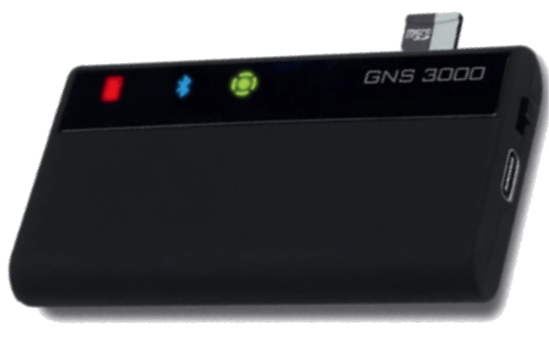
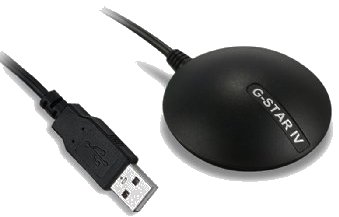 The arrival of Macs with Apple M1 processors and macOS systems 11 “Big Sur” and macOS 12 “Monterey” caused disappointment among GPS users connected via USB and/or Bluetooth for their navigation applications.
The arrival of Macs with Apple M1 processors and macOS systems 11 “Big Sur” and macOS 12 “Monterey” caused disappointment among GPS users connected via USB and/or Bluetooth for their navigation applications.
In USB, latest driver Prolific V.2.2.2 is now universal for GPS BU-353xx from GlobalSat. As for the GNS3000 (¹) in Bluetooth it always suffers from an instability of the interface for the connection of multiple devices, instability that unfortunately does not yet seem to be fully fixed.
Port USB
Once the BU-353 is connected to a USB port of the Mac M1 (using a USB-C converter), the new driver creates a serial port usbserial-xxxx, which is also called PL2303-USBtoUARTxxxx. With the utility CoolTerm, we can now display the NMEA sentences that are sent by the GPS. I specify that I tested with my “old” BU-353S3 who is over ten years old, not the most recent BU-353S4 or BU-353N.
But be careful, to date only the navigation application MacENCx64 directly recognizes the serial port, by selecting the type = SIRF USB, and displays the position.
Weather4D Routage & Navigation does not read the serial port, because this function does not exist in iOS. Note that the latest version of OpenCPN 5.6.0 for Mac is not given as compatible with macOS 11/12 and does not detect the serial port. However, we can use the trick : [Update 15/02/22 – Read Eric Rodriguez's last comment at the end of the article].
Bluetooth
When it works, it is super ! March, the GNS3000 is recognized and the connection can be activated. A GNS3000 serial port is created. On my first try I had no problems, except that the data was only received at the speed of 38400 bps (while the device is factory set to transmit at 4800 bps) :
As for the USB connection, MacENCx64 recognizes the GNS3000 port by selecting the type = Other and the flow rate set to 38400.
With Weather4D enabled in the Mac’s “Location Services” settings, the GPS position is well received from the GNS3000 :
[Update] With OpenCPN 5.6.0 you must use the same trick as that described by Eric Rodriguez when creating the serial port = /dev/cu.GNS3000 with a speed = 38400. But, once again, incomprehensibly, it may happen that the connection is not established. Mystery…
Wi-Fi
There, at least, everything works just fine ! Regardless of the connected Wi-Fi gateway sending NMEA data, with MacENC as with Weather4D Routing & Navigation :
Even with OpenCPN, but be careful, many malfunctions could occur with this version not adapted to macOS 11 and later.
To conclude, temporaly, there are still fixes to be expected with future updates of the operating system of Macs both in USB connection and Bluetooth. Fortunately, Wi-Fi gateways and multiplexers are becoming widespread on our boats, allowing us to connect to any type of computer and mobile device, to work with our favorite navigation apps.
–––
(¹) GNS3000 Bluetooth GPS receiver for mobiles
–––
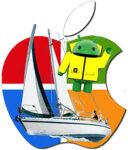

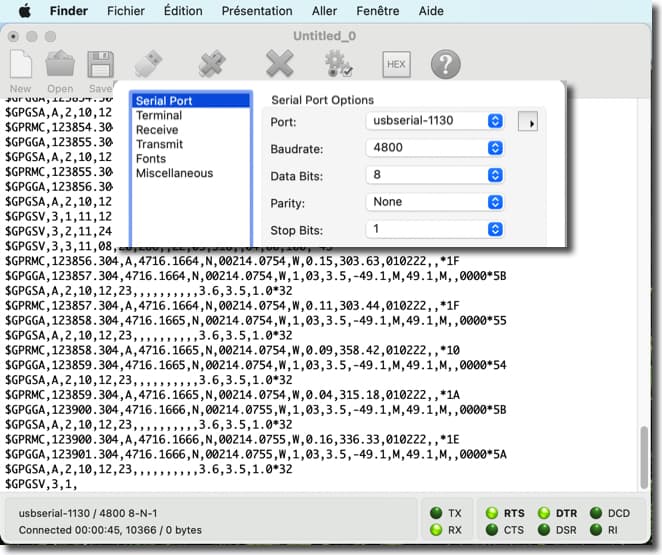


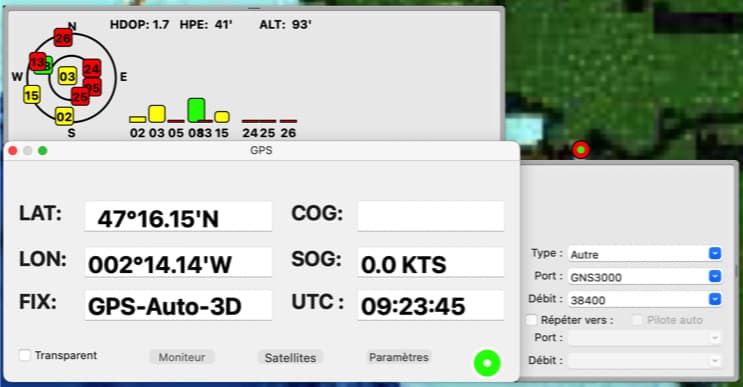
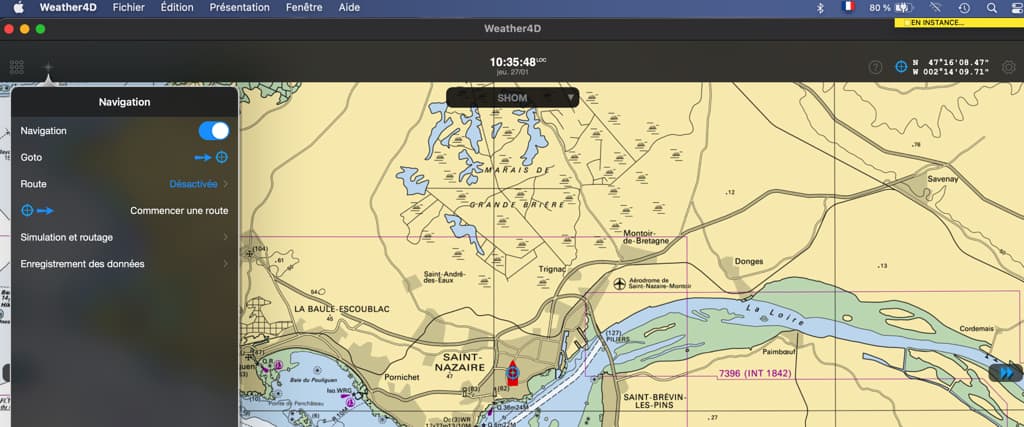
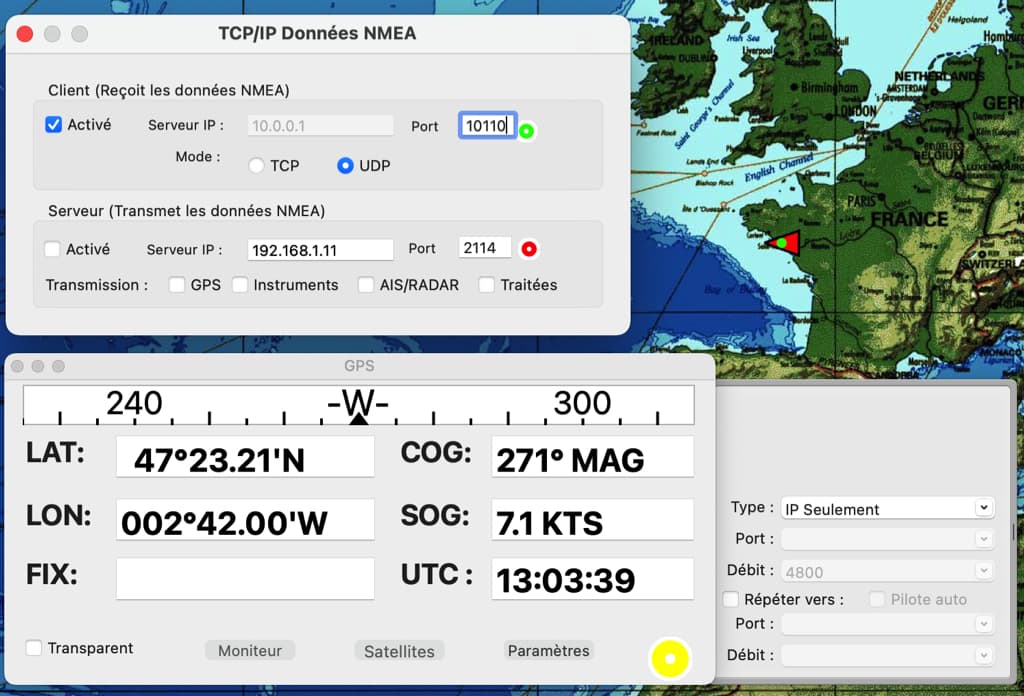
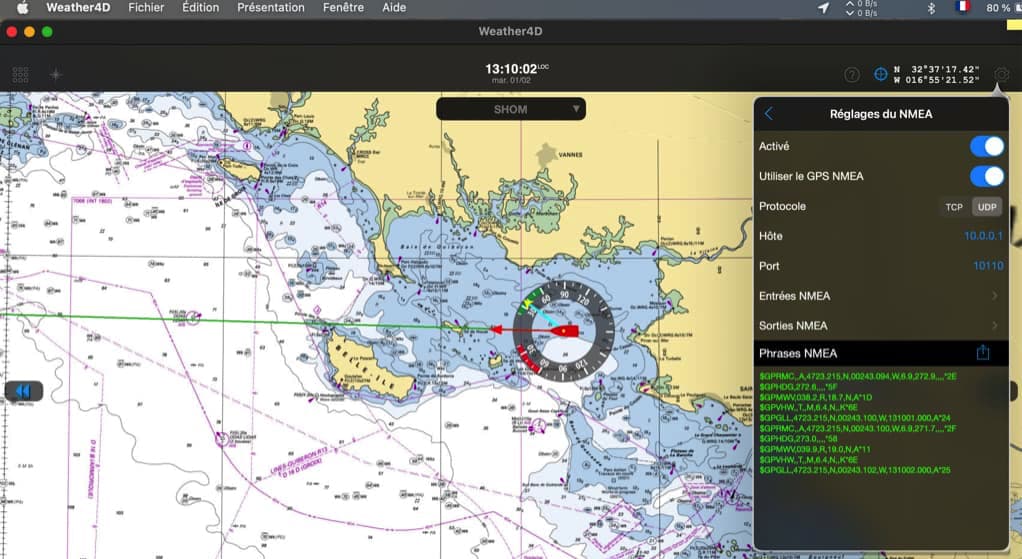
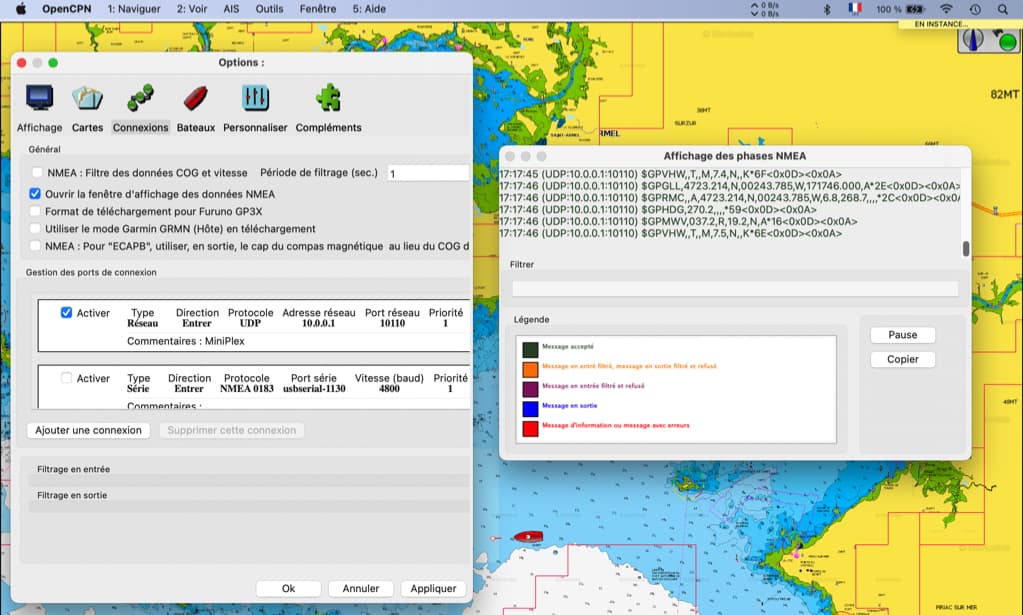
Bonjour,
To use Weather4D with a serial port, it should be feasible to redirect the serial port to a TCP socket. This is done quite easily via the terminal and the stty and nc commands.
I don't have the equipment on hand to test, but I can guide if someone wants to get started.
Good evening,
Problem solved Globalsat BU-354S4 GPS antenna reception on latest MacBook Air M1 with Monterey OS 12.1 and even 12.2 with opencpn 5.6.
Actually on the connection tab, serial USB input is not detected automatically.
It is necessary to first determine, by a utility application, identification of the serial port used.
This manipulation being done, you must manually enter the usb serial port as follows :
/dev/cu.usbserial-1140. 1140 being the identification of my serial port used for the Globalsat GPS antenna on my Mac.
This information being given, within a few seconds the antenna automatically detects the position. You can also connect the NMEA tab 183 to check the correct reception of GPS sentenses.
It took me a long time to find the solution, also with the help of Francis Fustier, but after finding the trick, cela fonctionne correctement depuis ce WE…
Bon tests en navigation.
Éric
Bravo et merci pour cette astuce qui démontre une recherche opiniâtre 😉
Bonsoir Monsieur Fustier,
Pour avoir essuyé les plâtres ensembles avec la dernière version Monterey sur Mac M1, je vous confirme également que même avec la dernière version Monterey 12.2 téléchargée, l’antenne Globalsat BU354S4 ne fonctionne toujours pas sur OpenCpn…
Je crois effectivement qu’il est préférable et plus sur (quoi que plus couteux) de communiquer en Wifi avec un réseau interne du bord et d’en profiter pour y connecter d’autres instruments (AIS, anemometer, sounder, GPS, aso…).
Eric
Bonjour,
Merci pour cet article précis. Mon commentaire sera légèrement hors sujet, but not completely. I use a Chromebook, which therefore has an OS different from MacOS (it's ChromeOS, derived from Android), but which has an M1 chip (advantage of low consumption).
I noticed the same problem recognizing the external GPS in Bluetooth (un GNS2000). The service is simply not included in the OS, probably because all Android phones have a GPS chip included in them.
I hope that the development recounted in your article for MacOS will be emulated on Android…
Thank you for this feedback… we can only hope that Apple and Olivier integrate this into a future version
Bonjour,
In the same kind of idea, is it possible to connect a shipmodul via USB to Weather4D connected to a MAC M1.
Emmanuel
No, no more than GPS since the serial port is not (encore) managed by Weather4D which, I remind him, is a development under iOS, not macOS. On the other hand, a Miniplex-2/-3Wi no problem.